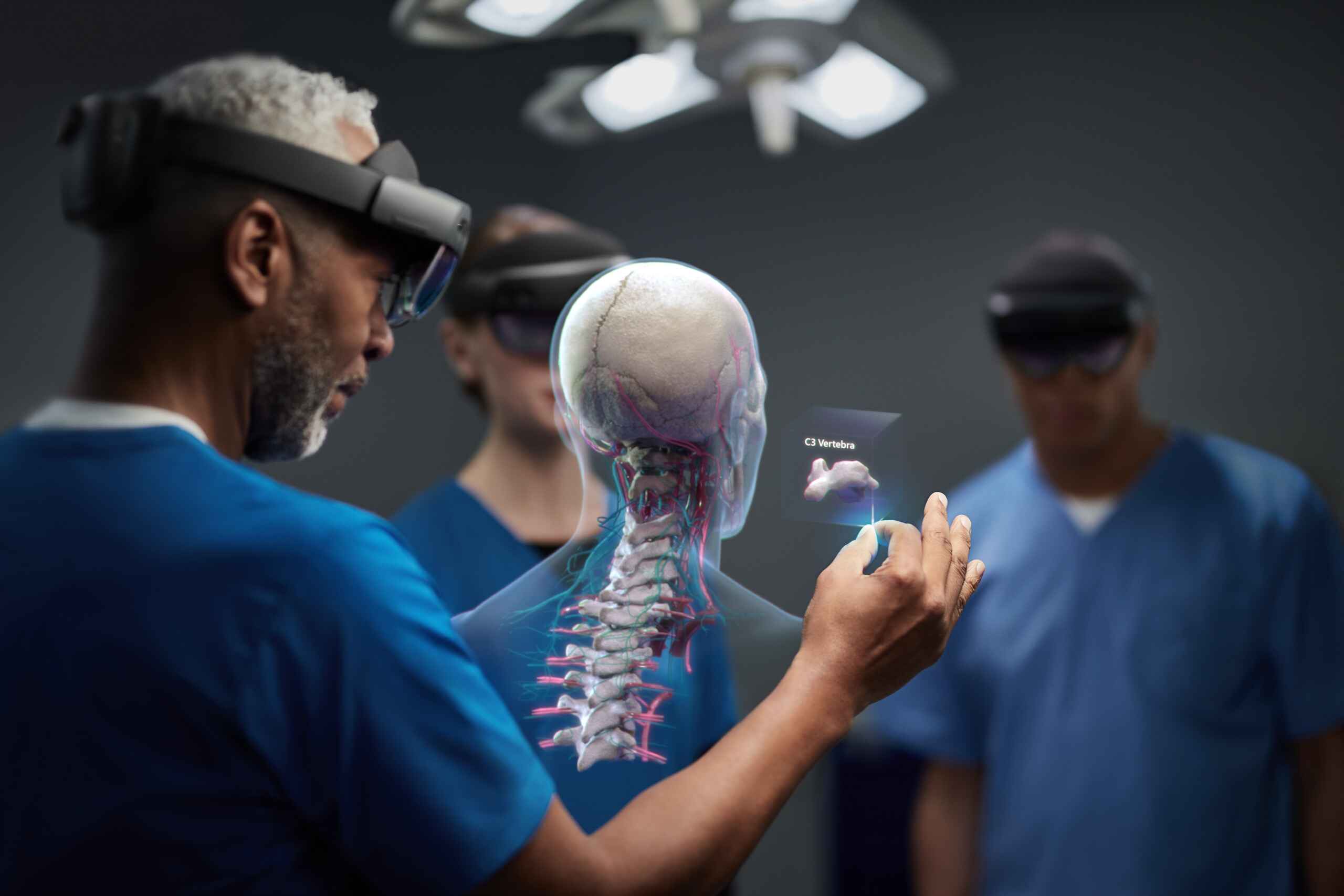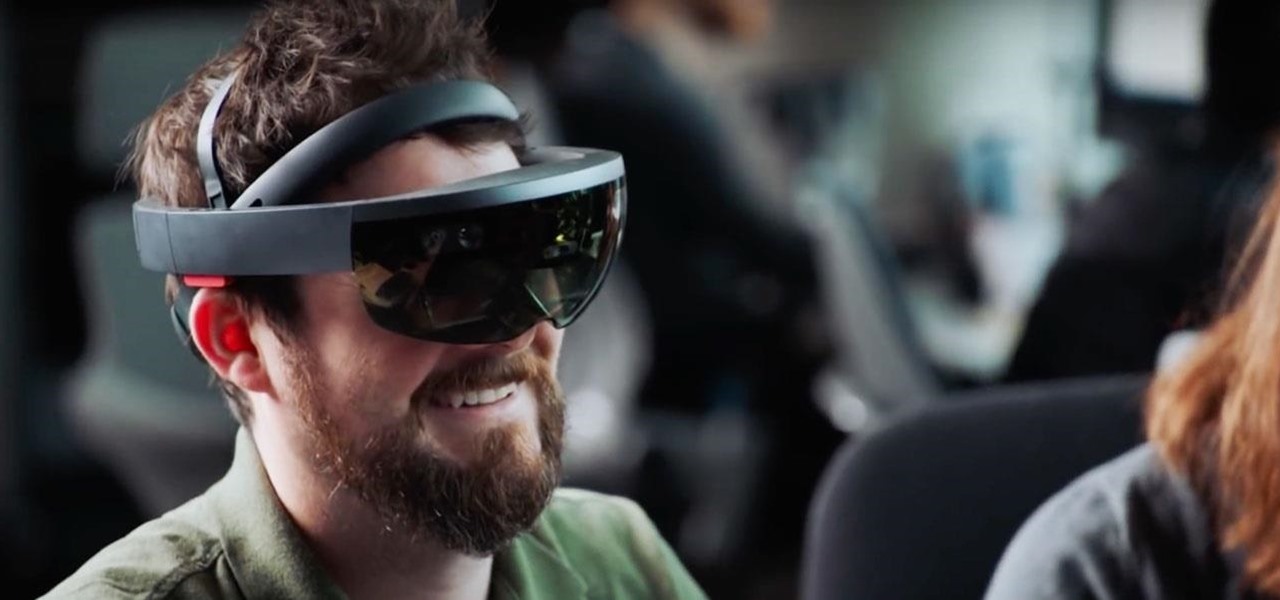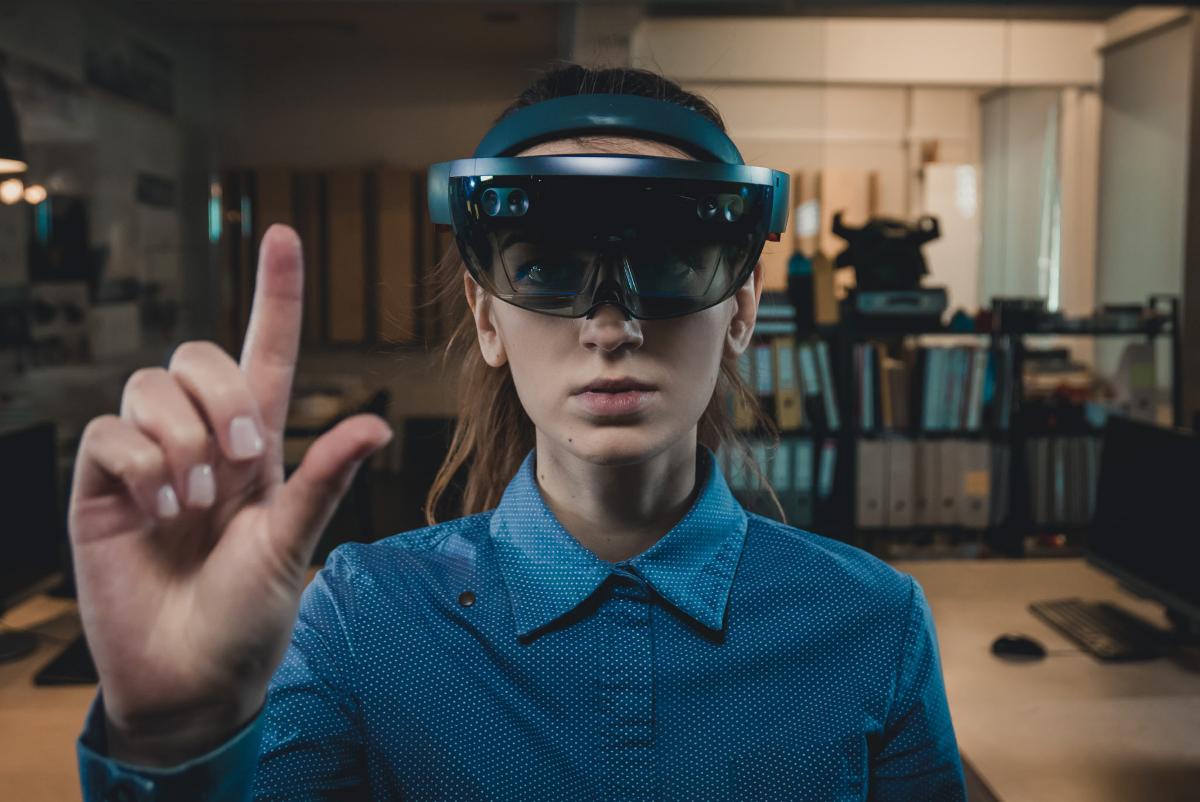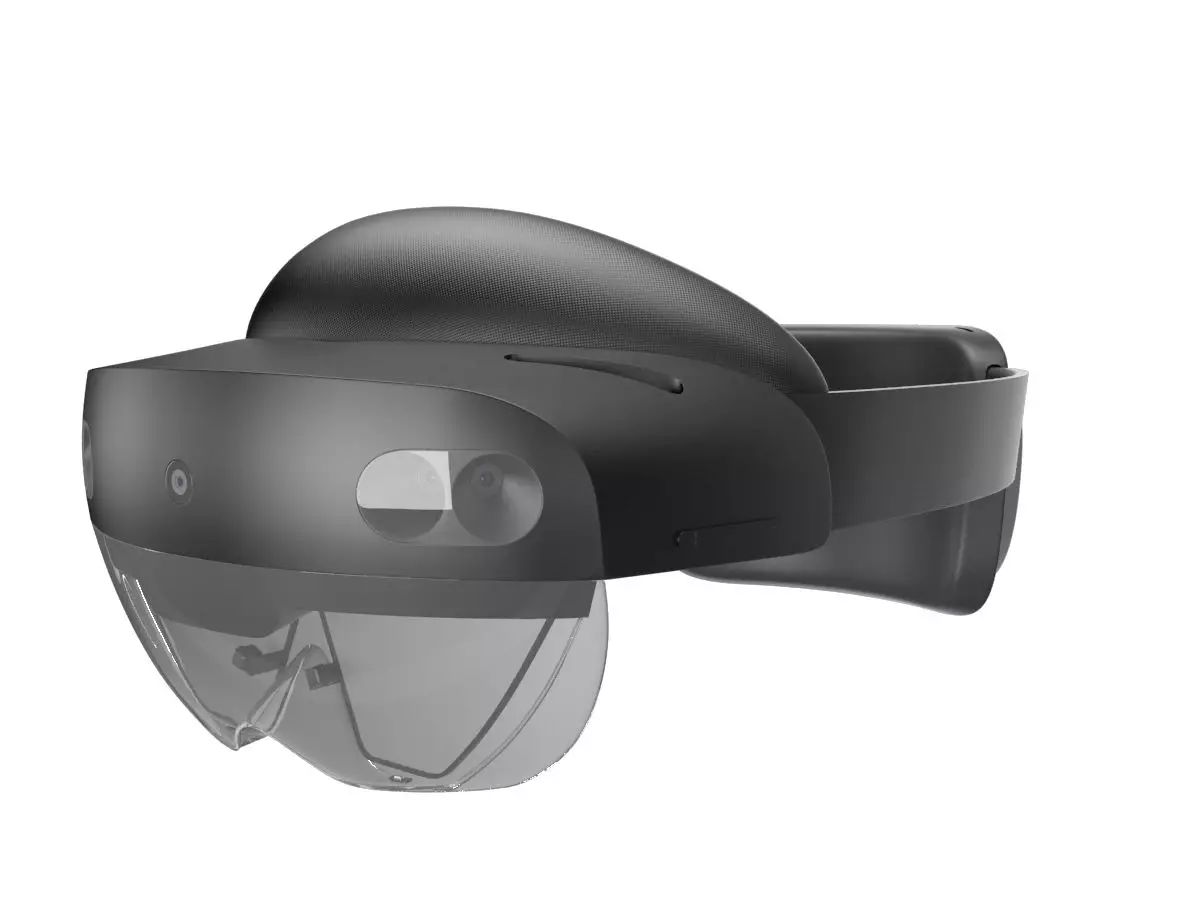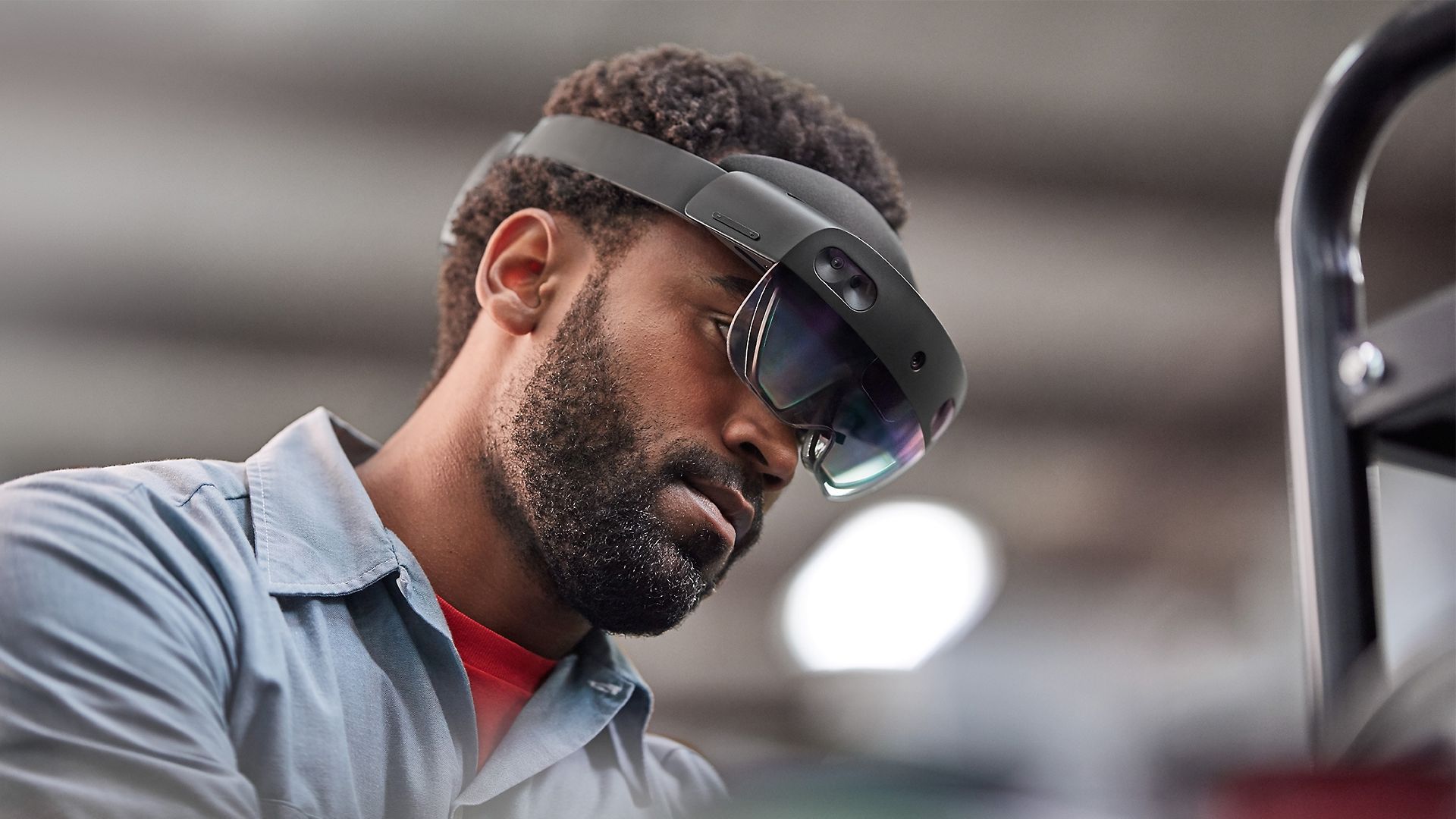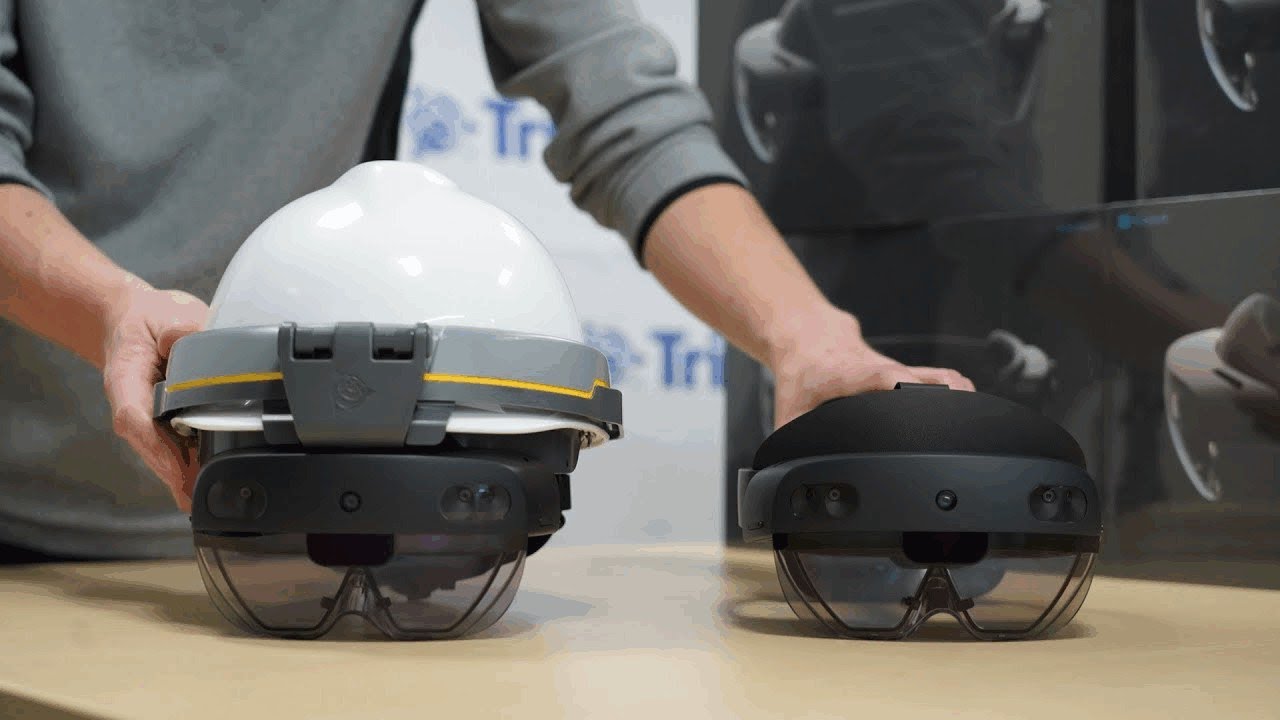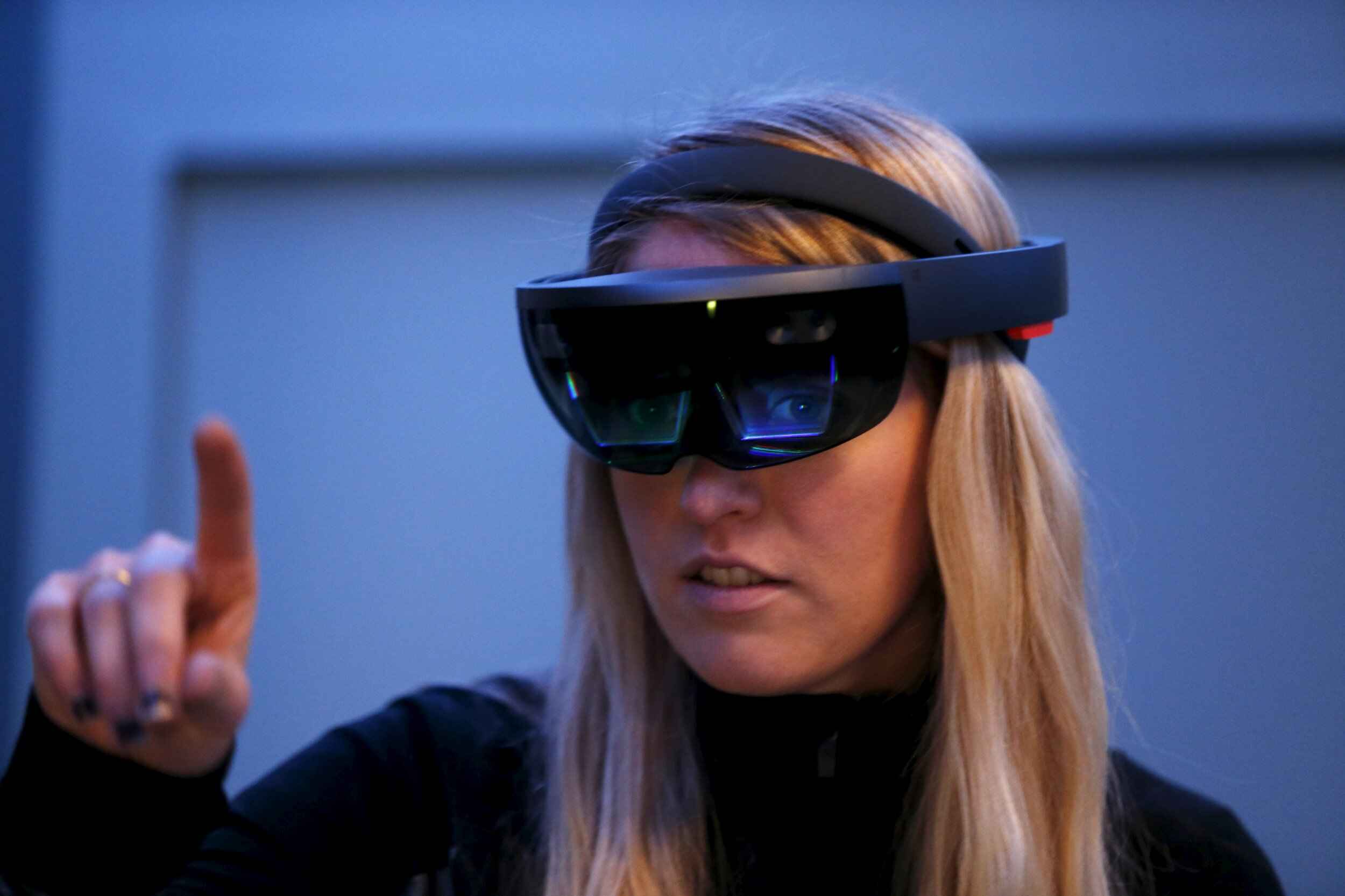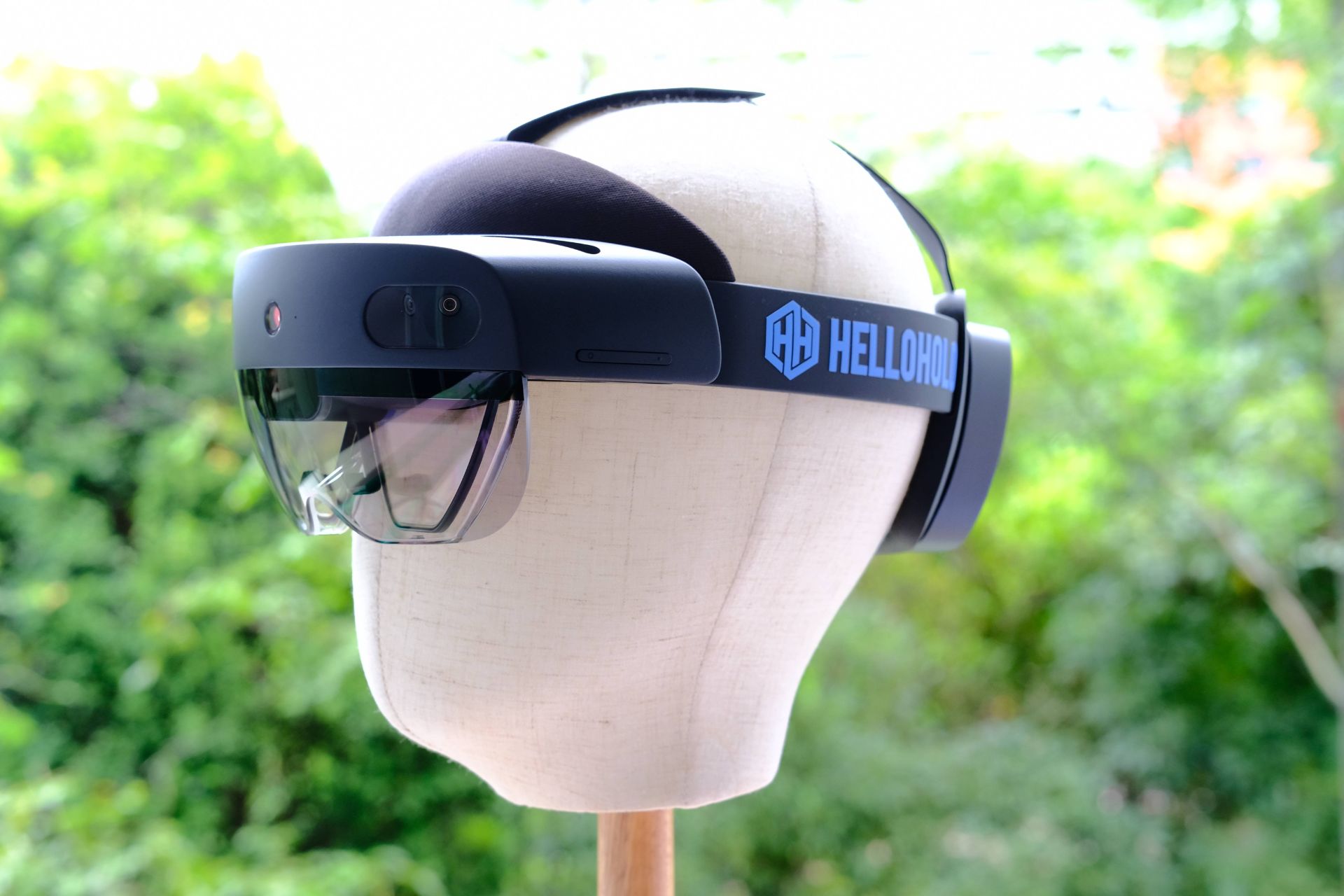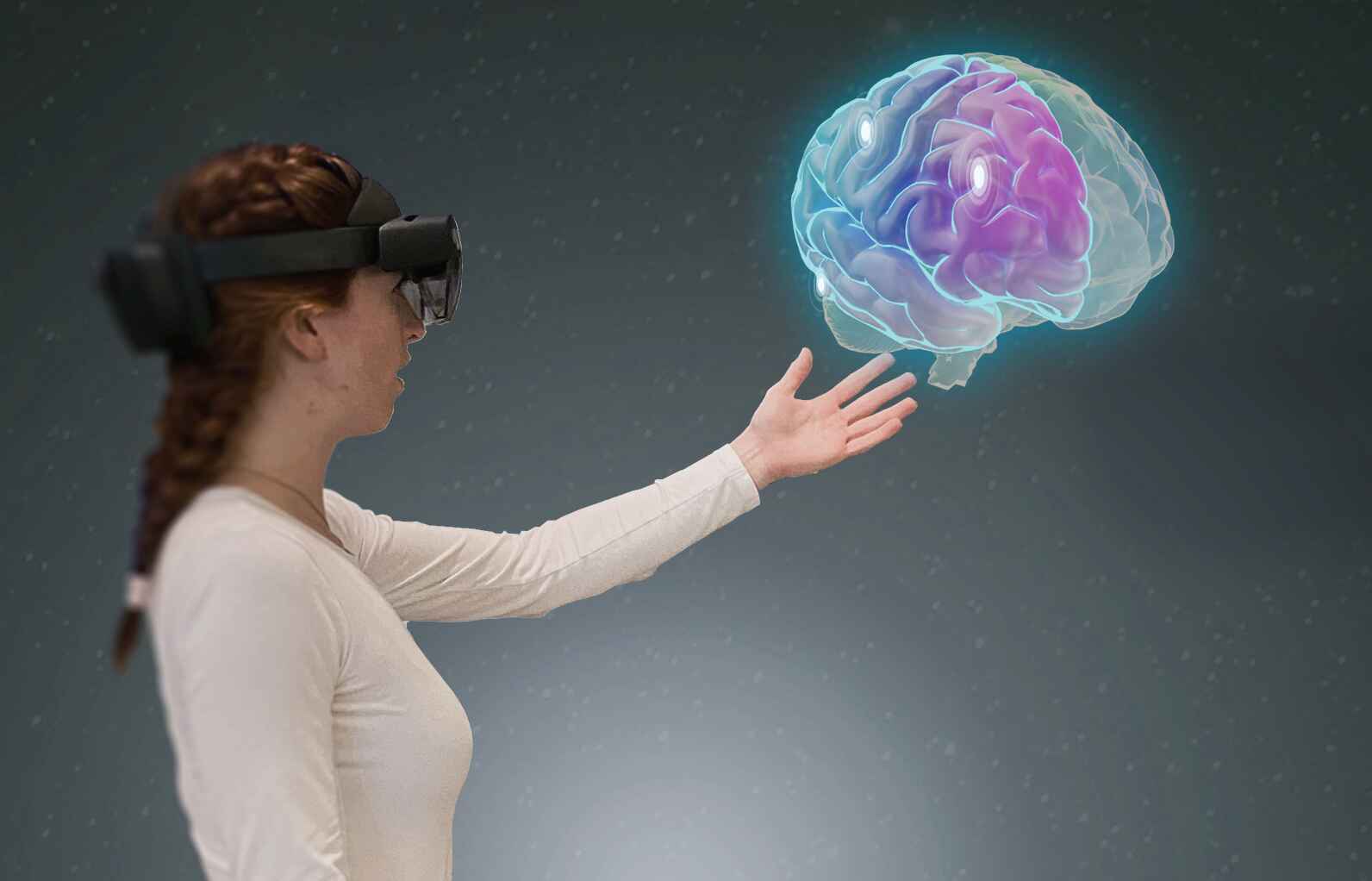Introduction
The Microsoft HoloLens is a groundbreaking augmented reality (AR) device that has revolutionized various industries by seamlessly blending digital content with the real world. This cutting-edge wearable gadget offers a unique and immersive experience, allowing users to interact with holograms and digital objects in their physical environment.
Unlike virtual reality (VR) devices that completely immerse users in a virtual world, the HoloLens offers a mixed reality experience. It enables users to view and manipulate holograms while still being aware of their surroundings, making it an ideal tool for a wide range of applications.
From enhanced visualization and interactive learning to real-time collaboration and improved design, the Microsoft HoloLens has proven to be a valuable asset across various industries. In this article, we will explore the numerous benefits and advantages of this cutting-edge AR device.
Whether it’s in the fields of education, healthcare, engineering, or entertainment, the HoloLens empowers individuals and organizations to unlock new possibilities and elevate their work to the next level. Through its advanced capabilities and seamless integration, it offers a glimpse into the future of augmented reality and its potential to transform the way we live, learn, and work.
Now, let’s delve into the specific benefits and advantages that the Microsoft HoloLens brings to the table.
Enhanced Visualization
One of the key benefits of the Microsoft HoloLens is its ability to provide enhanced visualization in a variety of fields. Whether it’s in architecture, interior design, or product prototyping, the HoloLens allows users to visualize and interact with 3D models in a more immersive and realistic manner.
Architects and designers can leverage the HoloLens to create interactive holographic representations of their designs. This enables clients and stakeholders to explore and experience architectural plans and interior designs in a more tangible and engaging way. They can walk around virtual buildings, change interior elements on the fly, and gain a deeper understanding of the space before construction even begins.
In the healthcare industry, the HoloLens is used to visualize medical imaging data, such as CT scans and MRIs, in a three-dimensional format. Surgeons can overlay the images onto a patient’s body during pre-operative planning, allowing for more precise and accurate surgical procedures. This enhanced visualization not only improves the surgeon’s understanding of complex anatomical structures but also enhances patient outcomes.
Furthermore, the HoloLens is also utilized in the field of education to enhance learning experiences. Students can explore virtual environments and historical landmarks, bringing their lessons to life. Complex concepts, such as human anatomy or astrophysics, can be visualized and interacted with in a way that textbooks simply cannot capture. This hands-on approach to learning fosters greater engagement and understanding among students.
Overall, the enhanced visualization capabilities of the Microsoft HoloLens have the potential to redefine how we perceive and interact with digital content. It opens up new possibilities in fields where visualization plays a crucial role, enabling users to experience and manipulate virtual objects in a more immersive and intuitive way.
Interactive Learning and Training
The Microsoft HoloLens offers a transformative approach to learning and training by providing interactive and immersive experiences. Whether it’s in the classroom or the workplace, this augmented reality device has the potential to revolutionize traditional methods of education and training.
In the field of education, the HoloLens allows students to engage with complex concepts and subjects in a hands-on and interactive way. Students can explore virtual environments, conduct virtual experiments, and interact with holographic models. For example, in biology classes, students can dissect virtual animals and observe their anatomical structures from different angles, providing a more engaging and comprehensive learning experience.
Similarly, in professional training programs, the HoloLens enables trainees to practice and hone their skills in a realistic and safe environment. For instance, in medical training, aspiring surgeons can perform virtual surgical procedures, simulating real-world scenarios without the risk associated with live surgeries. This immersive training experience not only enhances skill acquisition but also boosts confidence and competence for future professionals.
Moreover, the HoloLens fosters collaborative learning and training. Multiple users can simultaneously interact with the same holographic models, promoting teamwork, communication, and problem-solving skills. This collaborative approach is particularly valuable in professional settings where teams need to work together to solve complex challenges.
In addition, the HoloLens has the potential to provide accessible learning opportunities for individuals with disabilities. The device can offer audio and visual cues for individuals with hearing impairments and provide a more interactive and engaging learning experience for those with visual impairments.
Overall, the HoloLens enhances learning and training by breaking down barriers and providing a more immersive and interactive approach. It empowers learners to actively engage with content, reinforces understanding, and fosters collaboration, ultimately leading to more effective and impactful learning outcomes.
Real-time Collaboration
The Microsoft HoloLens has revolutionized the way teams collaborate by enabling real-time collaboration in a mixed reality environment. Whether it’s in the workplace or across different geographical locations, this augmented reality device breaks down barriers and empowers teams to collaborate seamlessly and effectively.
With the HoloLens, team members can share and interact with holographic content as if they were in the same physical space. Distance is no longer a limitation, as the device allows for remote collaboration, bringing people together regardless of their physical location. This is particularly valuable for global teams, enabling them to work together on projects, provide feedback, and make decisions in real-time.
For example, in the field of design and engineering, architects and engineers can collaborate on complex projects by sharing and manipulating holographic models. They can view and discuss 3D designs, make modifications, and visualize the impact of changes in real-time. This streamlines the design process, reduces communication barriers, and ensures all team members are on the same page.
The HoloLens also facilitates collaboration in industries such as manufacturing and construction. Workers can overlay digital instructions onto physical objects, providing real-time guidance and improving accuracy and efficiency. Remote experts can guide on-site workers through complex tasks, reducing the need for travel and minimizing downtime.
Furthermore, the HoloLens enables interdisciplinary collaboration by allowing teams with different areas of expertise to work together seamlessly. For example, in medical settings, doctors, nurses, and technicians can collaborate by overlaying patient records, medical images, and real-time data onto their surroundings. This multidisciplinary approach promotes effective communication, encourages shared decision-making, and ultimately improves patient care.
Overall, the real-time collaboration capabilities of the Microsoft HoloLens break down physical barriers and enable teams to work together in a more efficient and immersive manner. It brings remote collaboration to a whole new level, fostering creativity, innovation, and productivity.
Improved Design and Engineering
The Microsoft HoloLens has significantly transformed the field of design and engineering by offering new tools and capabilities that enhance the design process and improve overall project outcomes. With its augmented reality capabilities, the HoloLens provides designers and engineers with a unique and immersive platform to visualize, iterate, and refine their designs in a more interactive and efficient way.
One of the key advantages of the HoloLens in design and engineering is the ability to view and manipulate 3D models in a real-world context. Designers can overlay virtual prototypes onto physical objects, allowing them to assess how the design fits within its intended environment. This helps identify potential design flaws, make informed design decisions, and ensure optimal functionality and aesthetics.
Additionally, the HoloLens enables collaborative design reviews, where multiple stakeholders can simultaneously interact with the same holographic models. This promotes effective communication, streamlines the design review process, and facilitates quicker decision-making. Designers can receive real-time feedback, address concerns, and make modifications on the spot, improving overall project efficiency.
Moreover, the HoloLens enhances the prototyping phase by providing a cost-effective and time-efficient solution. Instead of creating physical prototypes, which can be expensive and time-consuming, designers can create virtual prototypes using the HoloLens. This allows them to test and evaluate different design iterations before committing to physical production, saving both time and resources.
In engineering fields, the HoloLens brings notable benefits. Engineers can use the device to overlay engineering data, such as models and simulations, onto real objects and environments. This aids in identifying potential clashes, optimizing space utilization, and ensuring accurate installation of complex systems. Maintenance tasks in engineering can also be simplified using the HoloLens, providing technicians with real-time guidance and visualizations for troubleshooting and repairs.
The HoloLens is particularly valuable in industries such as architecture, construction, automotive, and aerospace, where precise design and engineering are paramount. It empowers designers and engineers to push the boundaries of creativity and innovation, resulting in high-quality designs, improved functionality, and increased project success rates.
Enhanced Communication and Collaboration
The Microsoft HoloLens has transformed communication and collaboration by providing a seamless and immersive platform for teams to work together, regardless of their physical location. Through its augmented reality capabilities, the HoloLens enhances communication channels and fosters collaboration in a variety of industries and professional settings.
One of the key advantages of the HoloLens is its ability to facilitate remote communication. With the device, team members can interact with holographic representations of each other, making it feel as if they are in the same room. This enables more personal and engaging communication, bridging the geographical gap and ensuring that all team members are actively involved in discussions and decision-making processes.
In addition to remote communication, the HoloLens also enables real-time collaboration on shared projects. Multiple users can simultaneously interact with the same holographic models, making it easier to brainstorm ideas, share feedback, and work together towards a common goal. This promotes a sense of teamwork, encourages creativity, and enhances problem-solving capabilities.
Furthermore, the HoloLens offers advanced communication features, such as spatial audio and gesture recognition. This allows users to communicate and collaborate with intuitive and natural gestures, making interactions more seamless and efficient. Whether it’s pointing at objects, drawing in mid-air, or manipulating holographic elements, the HoloLens enhances the non-verbal aspects of communication, adding a new dimension to collaboration.
The device also supports multi-language communication by providing real-time translation capabilities. This feature eliminates language barriers, enabling teams from different regions or countries to communicate and collaborate effectively. This is particularly valuable for global organizations that operate in diverse cultural and linguistic environments.
Moreover, the HoloLens enhances project management capabilities by providing real-time updates and visualizations. Project stakeholders can view progress, timelines, and critical data all in a mixed reality environment, ensuring transparency and alignment across all team members. This promotes effective project coordination, reduces miscommunication, and improves overall project outcomes.
In summary, the Microsoft HoloLens revolutionizes communication and collaboration by providing an immersive and interactive platform that breaks down barriers and facilitates effective teamwork. It enables remote communication, real-time collaboration, and advanced communication features, ultimately enhancing productivity, efficiency, and project success.
Entertainment and Gaming
Aside from its professional applications, the Microsoft HoloLens offers a whole new level of entertainment and gaming experiences. With its immersive mixed reality capabilities, the HoloLens opens up a world of possibilities for entertainment industries, providing users with unique and interactive ways to engage with digital content.
In the realm of entertainment, the HoloLens brings stories and characters to life in a truly immersive manner. Users can watch movies or television shows with holographic overlays, adding an extra layer of visual engagement to their viewing experience. They can also explore virtual environments, such as museums, historical landmarks, or fictional worlds, creating a more interactive and memorable exploration experience.
Gaming is another area where the HoloLens shines. The device allows users to transform their physical surroundings into a virtual gaming arena. Users can engage in interactive experiences, where virtual characters and objects seamlessly blend with the real world. This opens up endless possibilities for augmented reality games, where users can battle virtual enemies in their living rooms, solve puzzles in their own environment, and engage in multiplayer experiences with friends or other players from around the world.
Additionally, the HoloLens offers a unique platform for tabletop gaming. Traditional board games can be enhanced with virtual elements, making the gameplay more dynamic and engaging. Users can interact with holograms and digital elements positioned on their physical tabletop, creating a truly immersive and interactive gaming experience.
Furthermore, the HoloLens empowers content creators and developers to explore new forms of storytelling and entertainment experiences. It allows them to blend real-world elements with virtual content, creating interactive narratives that captivate and engage audiences in new and exciting ways.
Overall, the Microsoft HoloLens opens up a vast array of possibilities in the field of entertainment and gaming. Its immersive mixed reality capabilities offer a unique and captivating platform for storytelling, exploration, and gaming experiences, pushing the boundaries of what is possible in the realm of entertainment and digital content.
Accessibility for the Visually Impaired
The Microsoft HoloLens has proven to be a valuable tool in improving accessibility for individuals with visual impairments. With its augmented reality capabilities, the HoloLens offers innovative solutions to enhance the daily lives and experiences of the visually impaired.
One of the key advantages of the HoloLens for the visually impaired is its ability to provide audio and visual cues in real time. The device can detect and describe the user’s surroundings, allowing them to navigate and interact with their environment more independently. For example, the HoloLens can identify objects, detect obstacles, and provide audio guidance to help users navigate unfamiliar settings or avoid potential hazards.
Furthermore, the HoloLens enhances access to information through its ability to overlay digital content onto the real world. Users can receive real-time audio descriptions and annotations of their surroundings, making it easier to understand and interact with their environment. This opens up new opportunities for educational experiences, as users can explore holographic models and visualizations that provide a deeper understanding of complex subjects.
In addition, the HoloLens supports the use of gesture controls, voice commands, and spatial audio, providing individuals with different ways to interact with content. This versatility caters to the diverse needs and preferences of the visually impaired, offering flexibility in how they navigate, access information, and engage with digital content.
The HoloLens also has the potential to enhance social interactions for the visually impaired. Through the device, users can identify and locate individuals in their surroundings, helping them connect with others more effectively. This fosters a sense of inclusion, as the HoloLens enables a more immersive and interactive experience in social settings.
Additionally, the HoloLens can serve as a tool for rehabilitation and therapy for the visually impaired. It can provide virtual environments for mobility training, allowing users to practice navigating different scenarios and improving their orientation and mobility skills. The device can also be used for visual stimulation and visual field expansion exercises, aiding in the rehabilitation process.
The Microsoft HoloLens demonstrates the potential for augmented reality technology to improve accessibility and enhance the lives of individuals with visual impairments. By providing audio descriptions, real-time guidance, and new ways of interacting with the world, the HoloLens opens doors to a more inclusive and empowered future for the visually impaired.
Increased Productivity and Efficiency
The Microsoft HoloLens offers significant advantages in terms of increased productivity and efficiency across various industries. With its augmented reality capabilities, the HoloLens introduces innovative tools and features that streamline workflows, enhance collaboration, and improve overall productivity.
One of the key benefits of the HoloLens is its ability to provide hands-free access to information and tools. Users can access relevant data, instructions, and applications without the need to look away or switch devices. This seamless integration reduces distractions and allows for uninterrupted focus on tasks at hand, ultimately improving productivity.
In the field of manufacturing and assembly, the HoloLens enhances productivity by providing real-time visual guidance and instructions. Workers can overlay digital instructions onto physical objects, reducing errors and minimizing the need for extensive training. This accelerates the learning curve for new employees and enables existing workers to complete tasks more efficiently.
The HoloLens also facilitates remote assistance and support, saving time and resources. With the device, experts can provide real-time guidance and troubleshooting, no matter their physical location. This not only reduces travel costs and operational downtime but also reduces the time required to resolve issues or perform tasks, leading to increased productivity.
Moreover, the HoloLens fosters collaboration and communication, boosting productivity within teams. Multiple users can simultaneously interact with holographic models, facilitating brainstorming sessions, design reviews, and collaborative problem-solving. This real-time collaboration minimizes the need for lengthy discussions or back-and-forth communication, accelerating the decision-making process and improving overall project efficiency.
The device also enhances project management capabilities. Through the HoloLens, project stakeholders can visualize project timelines, track progress, and identify potential bottlenecks. This promotes better resource allocation, improves project coordination, and enables teams to stay on track, ensuring projects are delivered on time and within budget.
Additionally, the HoloLens supports the integration of digital tools, such as 3D modeling and simulation software, into the workflow. This allows for seamless design iterations, realistic simulations, and rapid prototyping, reducing the time and effort required for traditional design and development processes.
Overall, the Microsoft HoloLens enhances productivity and efficiency by providing hands-free access to information, facilitating remote assistance, promoting collaboration, and integrating digital tools into workflows. It empowers individuals and teams to work more efficiently, enabling them to accomplish tasks quicker, make informed decisions, and achieve higher levels of productivity in various professional settings.
Conclusion
The Microsoft HoloLens represents a technological breakthrough that has revolutionized numerous industries and transformed the way we perceive and interact with digital content. With its augmented reality capabilities, the HoloLens offers a range of benefits and advantages across various professional settings, from enhanced visualization and interactive learning to real-time collaboration and increased productivity.
By providing enhanced visualization, the HoloLens empowers professionals in architecture, design, healthcare, and education to visualize and interact with 3D models in a more immersive and realistic manner. This leads to better understanding, improved decision-making, and enhanced project outcomes.
The HoloLens also facilitates interactive learning and training experiences by immersing students and trainees in virtual environments. This hands-on approach enhances engagement, boosts retention, and promotes skill acquisition, opening up new possibilities in education and professional development.
Real-time collaboration is another area where the HoloLens excels. The device allows team members to collaborate seamlessly regardless of their geographical location. It breaks down barriers, enhances communication channels, and fosters effective teamwork, resulting in improved project coordination and increased productivity.
In the field of design and engineering, the HoloLens offers tools and capabilities that streamline workflows, improve design iterations, and optimize project outcomes. It brings virtual prototypes to life, enables collaborative design reviews, and enhances overall efficiency and accuracy in the design and engineering process.
Furthermore, the HoloLens provides enhanced communication and collaboration for individuals with visual impairments. Accessible audio and visual cues, along with real-time descriptions, empower the visually impaired to navigate their surroundings, access information, and engage with the world in new and meaningful ways.
Lastly, the HoloLens offers entertainment and gaming experiences like no other. With its mixed reality capabilities, users can immerse themselves in interactive storytelling, explore virtual worlds, and engage in augmented reality gaming experiences, ushering in a new era of entertainment and digital content.
In conclusion, the Microsoft HoloLens has revolutionized various industries, elevating productivity, collaboration, and accessibility to new heights. As this technology continues to evolve, we can expect even more innovative applications and opportunities that will reshape the way we live, learn, and work.







